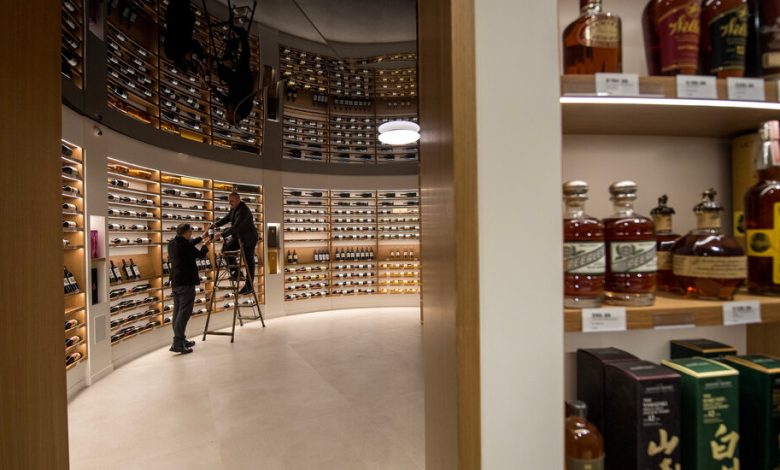The Wine Shop Millesima USA Doubles in Size for Its World-Class Selection

Upon entering the new Millesima USA wine shop, relocated earlier this month from a few blocks uptown, you’re in a no-frills array of shelves, racks and bins in a well-lit windowed setting. Emphasizing Bordeaux, Burgundy and Italy, with other major regions, including Spain, the United States and Australia, represented as well, there are pedigreed bottles into the low three figures. But that’s before you step into the soaring circular central core of the store, like a Guggenheim rotunda of wine they’re calling the forum. Even if you’re not in the market for premier cru Burgundies, well-aged first-growth Bordeaux, tête de cuvée Champagnes and sought-after Italian wines priced into the thousands and stacked to the ceiling, it’s worth visiting this section to view it, like an oenophile tourist, as you might a collection of fine art. And they’re all for sale. Originally opened in 2006 by a family-owned company founded in Bordeaux in 1983, and which does most of its business online, it was successful as a neighborhood wine shop. Now, more than double the size, with a world-class inventory, and offering futures (an opportunity to reserve rare wines in advance), the Upper East Side store steps into the gaping carriage trade void left after the venerable Sherry-Lehmann Wine & Spirits sadly plummeted, then failed. As for the spirits side of the alcohol business, they only carry a token selection.
Millesima USA, 1257 Second Avenue (66th Street), 212-639-9463, millesima-usa.com.
Cook Those Undersung Veggies
In trying to drum up business for less-routine vegetables like sunchokes, stinging nettle leaves and rutabagas, Becky Selengut, a chef and author in Seattle, digs deep in her new book. She provides well-researched background information along with nutrients, shopping, storage and preparation advice written in a chatty tone. For each of the 25 vegetables, grouped according to seasonality, she gives fairly simple, accessible recipes. If a chile-and-honey-glazed roasted treatment can’t get you to try parsnips, nothing will. Follow her excellent directions for prepping fresh fava beans in lemon and olive oil and you’ll be rewarded with a dish that puts the power of the beans and Pecorino on full display. I fully understand eggplant and artichokes, but was pleased to find a nice introduction to mustard greens.
“Misunderstood Vegetables: How to Fall in Love With Sunchokes, Rutabaga, Eggplant and More” by Becky Selengut (Countryman Press, $25.99 paper).
Italian Olive Oils Worth Drizzling
Among the steady stream of new extra-virgin olive oils from Italy are some to use for finishing, not in salad dressing or on the stove. An import by Gustiamo is Cru di Cures from Lazio, near Rome, a region not well-known for its oils. The Fagiolo family that makes it uses traditional local olives like raja and carboncella to produce a greenish gold oil with a brambly fragrance and richness the leads to a hint of pepper. Another, from Umbria near Spoleto, is an oil that the chef Marc Murphy has been bringing in for his own use with the participation of his brother, Paul Murphy, who lives in the region. Now he has started selling it. Umbrian Gold Martani 2023, pressed from organic moraiolo, frantoio and leccino olives, is chartreuse, herbal and forceful; you can’t ignore it.
Cru di Cures extra virgin olive oil, $35 for 16.9 ounces, gustiamo.com; Umbrian Gold extra virgin olive oil, $45 for 16.9 ounces, umbriangold.com.
Rye and the Jewish Community
